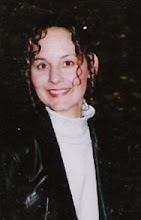When I was running a shelter for abused and unwanted farm animals, I gained lots of experience in helping underweight or malnourished horses to gain weight - not fat, but muscle too. Like with people, large does not necessarily equate healthy. With horses, a big round belly does not equate health. I have seen big round bellies on animals infested with worms, and animals fed lots of nutrient deficient hay. The biggest mistake people make when trying to help horses gain weight, is whopping the wormers and hay to them. Not always what they need.
The first thing I do with thin and out of condition horses is to measure their height, girth, and evaluate their condition using a condition scale. This looks at their overall health, hydration, physical condition among other parameters. (See www.omafra.gov.on.ca for a conditioning scale)
I always worm new horses on the farm on arrival, BUT, one must use caution when worming. Treating a worm infested horse can cause the horse to colic. Use caution when worming a horse with no known worming history. I usually administer half the dose recommended and then repeat the worming in 4 weeks, then again in 4-6 weeks, then every 8 weeks for one year. I know that is overkill, but it works. I also ask a vet to check the horse for other potential problems like EIA, or some other illness. It is also a good idea to have a fecal sample tested for parasites, and to have the horses teeth floated.
The other mistake people make is "whopping the feed" to the horse. Again, use caution. You can colic a horse doing this! I always start the animal slowly... even if the previous owner says the horse was on a quart of feed at their farm, any horse I get, goes on a one day fast (from grain) and is then started slowly onto my feed. I will often try to get a half a bag of what they had at the previous barn and mix it with my feed slowly transitioning the horse onto my feed.
In the case of
ponies, and Bojangles, I fast the pony from grain for one day,
day 2-7 I feed a handful of grain, 1/2 cup of bran, 1/8 cup of vegetable oil, 1/8 cup of ground flax seed, and a tablespoon of vitamins and minerals once a day in the evening. I like to feed in the evening because the heat from the digestive process helps keep the horse warm through the night, this is especially good in the winter. I will also warm the water in the winter to save on calorie consumption in the horse (the body temperature will drop if the belly is full of cold water, and will need to increase calorie consumption to warm the belly/horse, this takes away from fat formation to help the horse gain weight). Be sure to keep an eye out for signs of colic when changing the diet. I will increase the number of times I check on the horse during this time, including a late or middle of night check.
Day 8-15 I increase the proportions to 1 cup of grain, 3/4 cup of bran, 1/4 cup oil, 1/4 cup of ground flax seed, and a tablespoon of vitamins and minerals once a day.
Day 16-21 the proportions increases to 1 1/2 cups of grain, 1 cup of bran, 1/2 cup of oil, 1/4 cup of ground flax seed and a tablespoon of vitamins and minerals once a day.
Day 22-29 I give 2 cups of grain, 1 1/2 cups of brain, 1/2 cup of oil, 1/4 cup of ground flax seed, and a tablespoon of vitamins and minerals once a day.
For the next 30 days I give the same proportions twice a day. Watch the horses growth and condition daily, and measure girth for weight change at least every 30 days. This is really important with ponies as they can gain weight rapidly.
This method has worked very well for many horses in my care. It usually takes the average underweight horse 6-9 months to get to a healthy weight. I also avoid working the horse during the first few weeks of this program, and if they are gaining nicely, I start a walking program with them to help build muscle mass, starting slow at first, then increasing the amount of work slowly, all the while watching for weight loss.
Returning a horse to good health and condition is difficult, requires patience, and diligence. Hang in there, and be attentive to minor changes with the horse. Good luck and I hope this helps!






